Proper Ataulfo handling practices increase sales and consumer satisfaction
El Grupo Crespo grows exceptional Ataulfo mangoes. They grow the Ataulfos in ideal microclimates that yield their signature flavor – sweet, sugar-caramel with a tinge of spice. If you ask me, it can only be created in Mexico.
The Ataulfo mango, a Mexican cultivar, is puro Mexico, as the saying goes. Just like Indian mangoes and Thai mangoes taste and look a little different when grown in Mexico, the Ataulfo mango is the same grown elsewhere. The Mexican season is THE season for this special mango. Many consumers know this and more are learning. We want to fuel that momentum, educating on best handling practices, and gaining more lovers of Mexico’s Ataulfo.
Picked at proper brix and moved quickly through the supply chain, the Crespo Organic program produces Ataulfos that ripen a bright yellow with as much blemish-free skin as possible. Specific harvest techniques and packing strategies further ensure a quality piece of fruit. The program not only produces quality but has volume and sizing potential like no other. We are all proud of the work that we have invested in the program.
But the Crespo team is only one part of the program’s success. It takes strong partnerships dedicated to each specific sector doing their part to ensure the critical points of quality are met and consumers get the best fruit. Transporting, storing, and merchandising the highly cold sensitive Ataulfo mango ensures prosperity, expansion, and growth and, most importantly, repeat Ataulfo consumers
Our strong partners at Earl’s Organic Produce in San Francisco, Four Seasons Produce in Ephrata, as well as New Seasons Market & New Leaf Community Markets in the Pacific Northwest have built some of the most fruitful Ataulfo programs around. These programs produce large volume sales and powerful consumer excitement all season long.
Here is some of what our partners have had to say:
“I remember in the beginning New Leaf was a classic health food store and, for something like mangoes, we would merchandise in tiny baskets hidden away somewhere. But over the years that has all changed and the Crespo brand has been a big reason for our increased sales. A good growing partnership combined with big impactful displays of mangoes has proven to be a winning combination. We used various marketing materials but the main takeaway is to bring the Ataulfos front and center.”
-Maroka Kawamura, Category Manager of Produce/Floral for New Leaf Community Markets
“Maintaining the proper temperature through all facets of the logistical chain is important in peak freshness. Crespo’s partnership has helped us grow our Organic Ataulfo Mango sales by providing consistent quality and stressing this important factor in top notch quality.”
-Ken Yoder, Mango Buyer for Four Seasons
“Crespo Organic’s greatest strength is in their season-long consistency on quality, volume and size; this makes it easier for us to do our part.”
-Jeff Fairchild, Produce Director for New Seasons Market
“Constancy in price, availability, size and quality! Retail often is spread thin so making sure the buy is the best price, best quality and best size, gives retailers the opportunity and surety to allow themselves the breathing room to be curious about this piece of fruit and let that curiosity educate them and their customer base.”
–Senior sales and marketing staff at Earls
Our new campaign Ataulfo Mangoes; Sweet & Picky! (We’re Tropical, We Hate the Cold!)
Proper Handling Practices Yield Program Success & Consumer #MangoJoy
The education campaign aims to utilize not only Crespo’s mango expertise but also the expertise of Crespo’s strong partners in emphasizing and educating on the importance of proper transport, storage, merchandising, and handling for optimal program results and varietal (sales) growth.
On both the growing and retail side of the industry, there is significant interest in the Ataulfo mango from consumers nationwide. Mexican, Peruvian, and Ecuadorian growers are increasing their Ataulfo acreage more and more, and more and more retailers are carrying the varietal. But few industry folks are emphasizing how to succeed with the specific nuances of this varietal: a varietal that tends to be more sensitive to cold than the round varietals.
We have one of the largest Ataulfo programs around. We know the importance of education on the industry and consumer level, and we know it’s our job as the mango experts to do our part. This is especially true as we launch more varietals into the US marketplace like the Thai, Mallika, and soon the Alphonso mango. All of these specialty mangoes tend to be equally cold sensitive (and, well, generally sensitive). Afterall, mangoes are tropical; they like tropical weather. To pay attention to the individual nuances the best we can, to bring attention to their needs (even when it might be impossible to meet all of them), sets us all up for greater success. This means more great tasting mangoes for mango consumers.
It’s possible to build really strong programs, but it does take attention from the industry to ensure consistency. Every pinpoint along the supply chain is important and requires expert attention. Once consistency exists, consumer appeal is the easy part.
Ataulfo consumers understand how special this varietal is and, if we can all begin to understand how it wants to be treated, the more profit and #mangojoy we will all share in. Successful Ataulfo programs pay attention to the entire process, knowing the consumer will make or break the program.
“Every year the mystery of the mango in the US is less and less, and at New Leaf shoppers come back for the Ataulfo in particular,” exclaims Kawamura.
We want to build more successful Ataulfo programs using our voice and the voice of our time-tested relationships to educate the industry. The avocado industry was successful in getting avocados out of retail coolers, and now it’s time that we – the mango industry – does the same. This is my way of starting that process and I hope the rest of the industry jumps in.
Transport & Storage Abuse
Mangoes are cold sensitive and Ataulfo mangoes even more so. If we remember to keep them as close to their tropical temperature environments as possible, we can keep them looking and tasting their best. Most important is to eliminate as many temperature fluctuations as possible.
Chilling injury or cold damage is the main issue with Ataulfo quality other than fruit picked too green, hot water bath issues, or poor orchard nutrition. All of these issues can be accounted for with a good growing system and technologically advanced packing systems, reducing if not entirely eliminating the issues.
Though cooler temperatures from the Mexican packhouse to the US border warehouse can help keep the fruit fresher longer, if it moves fast in this phase, too cold can damage Ataulfo mangoes. This is why we take extra effort by employing some Crespo shipping secrets when loading Ataulfos on any temperature truck. We won’t load Ataulfos at the border on trucks below 45℉, not even if the customer takes the risk, because it doesn’t benefit us that any consumer will buy a cold damaged Ataulfo, and we have methods that can keep pallets warm for at least a 2-5 days drive at 45℉.
What we can’t control is the store and transport after that. This is where good partners come in. If mangoes are exposed to extreme cold for too long, the cells start to break down. There is a science to this, but here is the gist of when a mango gets too cold:
- Gray, dull, lackluster skin
- Rapid, uneven ripening
- Flesh discoloration, browning
- Flavor souring℉
- Quicker deterioration/decay
In other words, if an Ataulfo mango gets too cold, it looks and tastes gross, and this has nothing to do with the normal ugliness of a ripe Ataulfo which gets wrinkly when ripe.
Ataulfos thrive in an environment of about 55℉. They are also extra sensitive to air flow on their skin, especially cool or cold airflow, so transporting them or storing them anywhere with too much airflow (like under the airflow of a reefer) will damage the skin, even if only exposed for a short time. The more consistent the temperature, the longer the shelf life will be and more consistent ripening can be expected. The riper the mango, the more sensitive to cold damage it is. This is another reason the growers/shippers like us need to move them quickly.
We work really hard to move the product fast. The mango packing process takes 72 hours and, once the product hits our US warehouse, we typically move it in less than 24 hours. THIS IS UNIQUE and why strong retail/wholesale/processor relationships are crucial to the success of programs and why the brokerage game is particularly troublesome for all mangoes but especially Ataulfo mangoes.
Transporting Best Practices
We know that trucking produce to retailers is a difficult task these days with more limitations in temperatures. This has created a cookie cutter transport temp that may not fit all commodities. Mixed item goods are typically transported on the coldest setting based on the commodity on the truck that needs to be the coldest setting. The more you can maintain the cold and warm truck philosophy from border to warehouse, the better.
Delivery to the individual retailers with multiple and differing temperature items on a pallet, especially a warmer 50℉ temp, may be impossible to adhere to. Yet there are ways to combat this issue. You can build pallets with cold sensitive mangoes in the middle of pallets versus on the top and not touching other cold or iced items. Wrapping the mangoes or placing them in another box to keep them from the cold and the air are some ways others do it.
Sometimes it’s just a process like delivering most of the warm items together and the cold items together, even if these are small orders. We’ve seen some folks place dividers between the cold/wet and warm products on a pallet: iced and cold stuff on the bottom and warm stuff above the divider and wrapped
Merchandising Ataulfos
Mangoes should never be refrigerated at the store level unless they are peeled and cut. They should also never be stored in a cooler in the back room or put in a wet or cold display. At store level they should always be stored in ambient temperatures.
When space is an issue, Four Seasons merchandiser, Brian Dey, recommends building stand alone small displays using the mango boxes, which he shares “make not just a beautiful display that you can put anywhere in the store but acts as your mango storage space, too.” Fairchild reminds us, “Ataulfo mangoes begin to ripen faster as soon as you handle them, so storing them in their boxes and not putting all of them on display helps ensure the display you do have has longevity.”
“Teaching the floor staff about proper Ataulfo temperatures and handling makes for better decisions at store level,” Dey continues. Equally, an educated consumer is an important aspect of any Ataulfo program. If the consumer knows the correct handling aspects of an item, both at the store level and at home, the better the outcome. The consumer becomes part of the system and they can help patrol best practices. Eventually they won’t grab a mango from a cold display and, if they do and it’s brown inside, they will know why. This is why industry-geared education is essential for consumer platforms like social media.
Likewise, is a game changer and helps ensure optimal merchandising success. Spencer Bernardo, mango buyer at Earl’s, shares, “plenty of fruit in the pipeline releases pressure off a store and allows them to focus on some of the finer details of the fruit. For example, a better understanding of the seasonality, better handling practices (keeping mangoes out of the cold back stock or off refrigerated displays), displaying promo info and recipe cards, and top point from sales perspective gives retail breathing room to sample fruit which absolutely moves the bar as far as awareness of product and initial/repeat sales.”
RipeningWhen Mexican Ataulfo mangoes are picked, packed, and transported properly they ripen on their own beautifully with superior flavor. Ataulfo mangoes that have been handled properly ripen with even timing and allow for optimal sweetness and retail shelf life, giving consumers multiple variances of ripe mangoes that fit their eating and cooking schedules.
The Basics for Success
The basics are really what it’s all about in terms of Ataulfo program success. Fairchild breaks the process down for us, starting with the consumer. “In terms of our consumer or any consumer, you first have to find a price point and size that works best for them and keep it consistent. Crespo works well for us because they keep us in the same size and quality all season long with consistent pricing. The consumer sees and comes to expect the constancy – the price works, the size works, the quality works. You have the volume and the consumer interest; you ride it hard!”
“Commitment to a season-long program is what works for us. Trying to make this only a promotional item for this month or that month doesn’t work. We put up big center displays that tantalize consumers with sweet fruit at the onset of the season when there isn’t a lot of competing sweet fruit available and then we continue to deliver it all season long at an enticing price.”
A few more of Fairchild’s notes on Ataulfo success:
- We ship from Nogales on warm trucks; Crespo does their special thing to keep them warm and draft-
- We store at warehouse level in one of our warmer rooms at 45-50℉.
- We never refrigerate at store level.
- We build displays that meet sales volumes.
- We replenish supply 2-3x a week all season long.
“When we cooperate, share and work transparently we are all the mango experts, from orchard to table.”
-me, Nissa

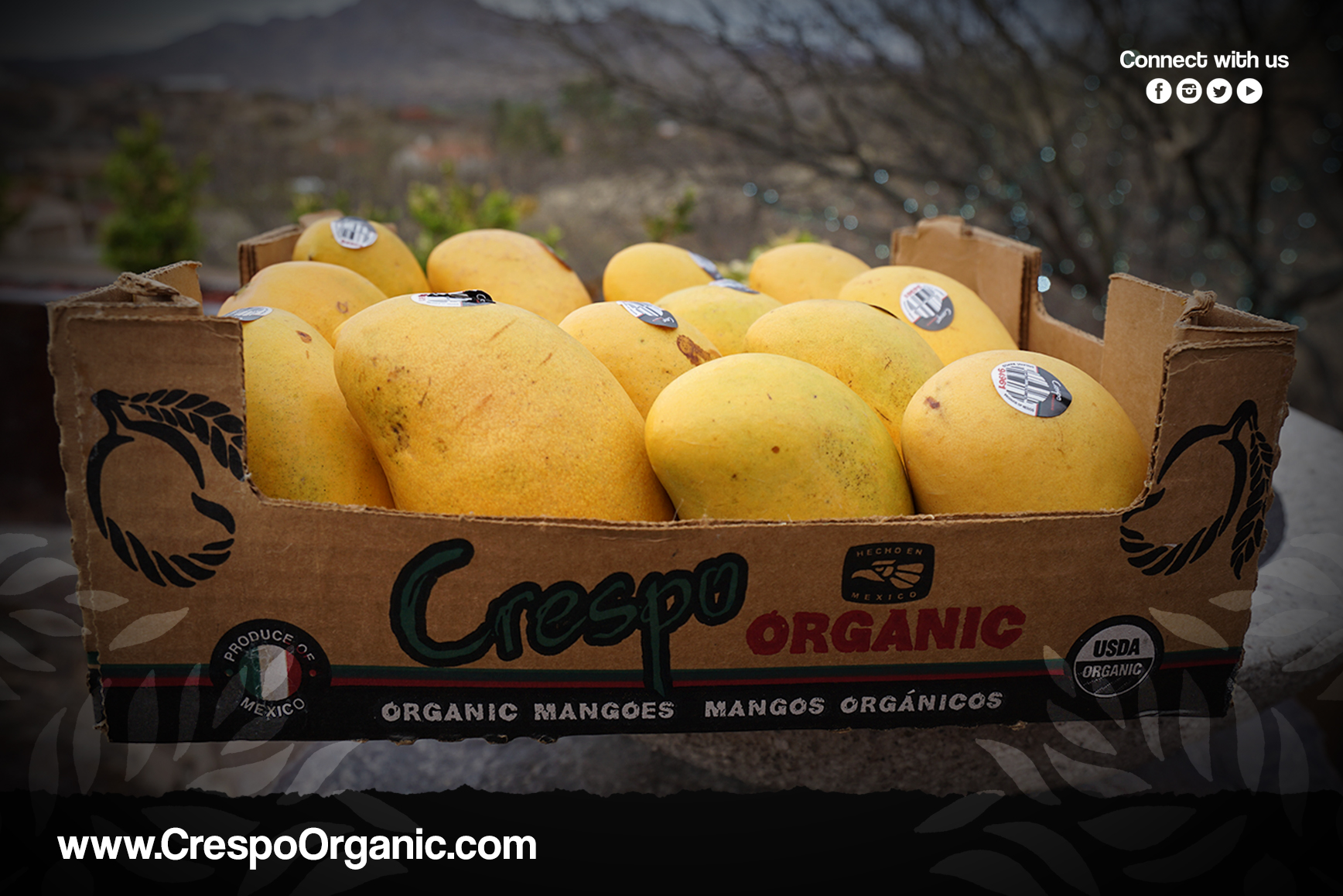
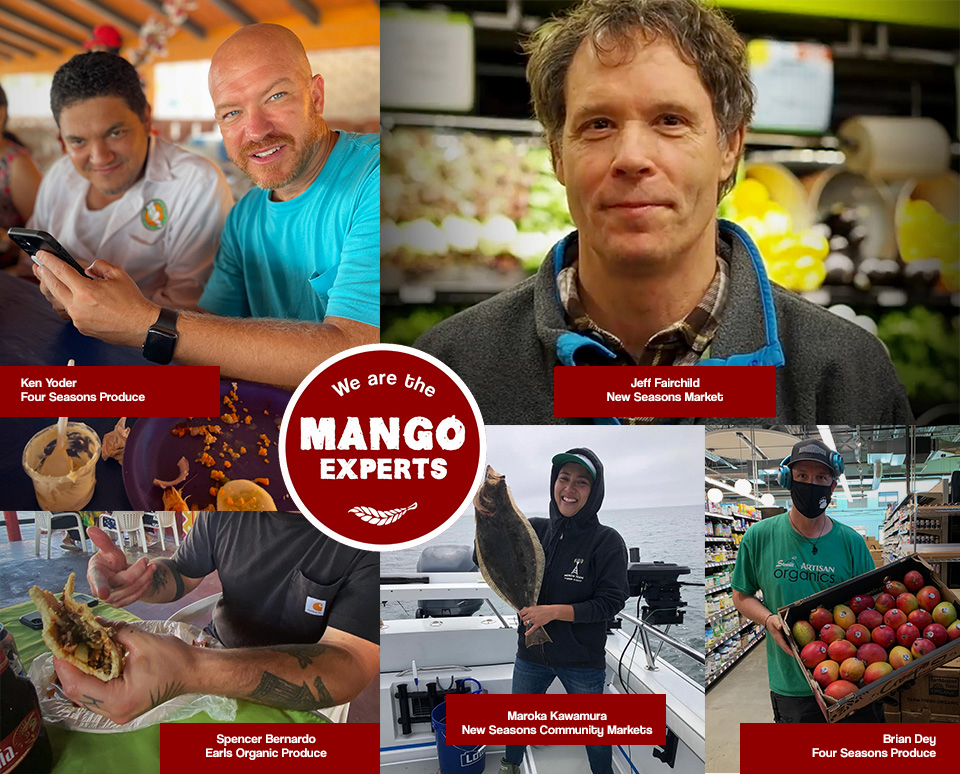
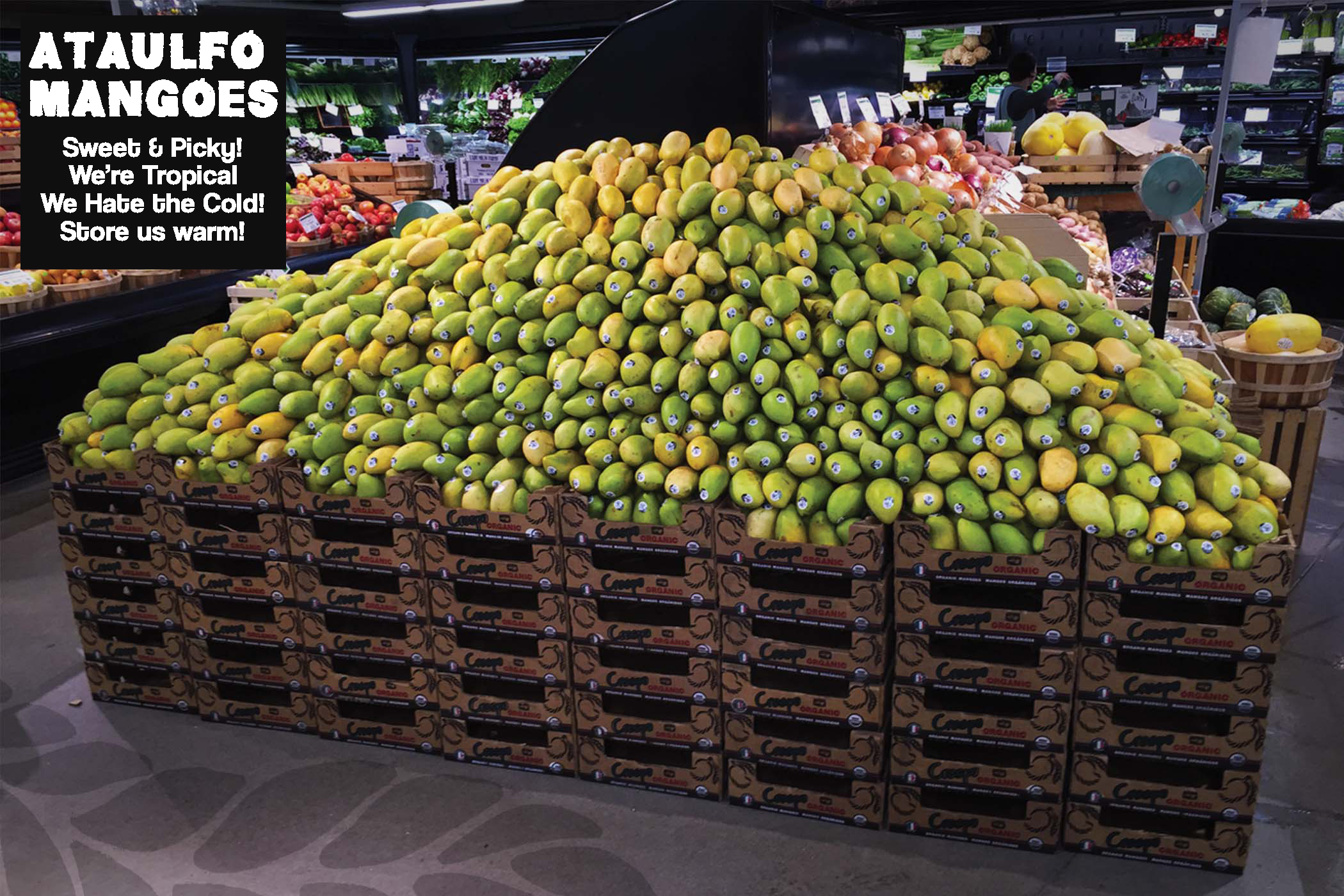
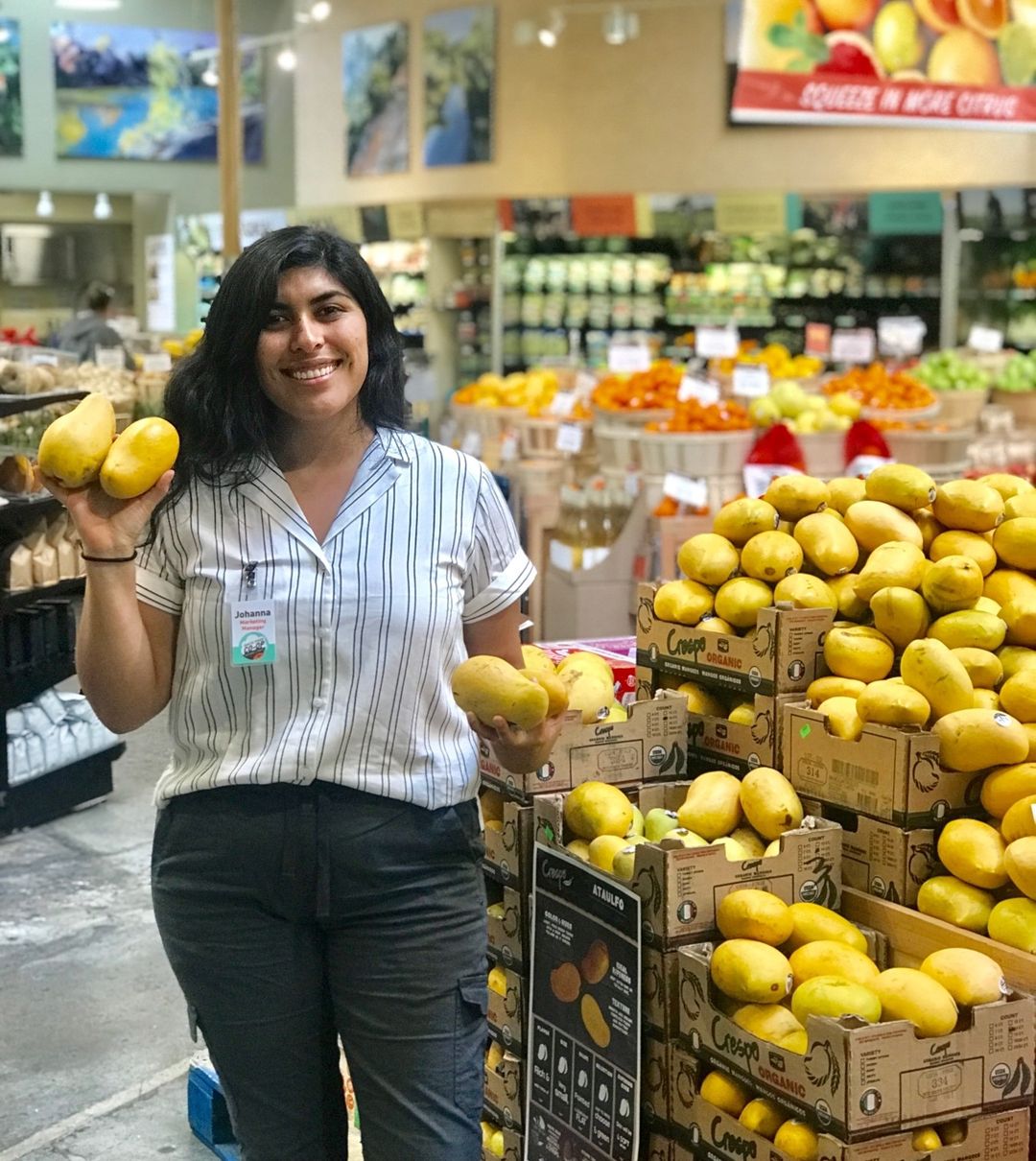
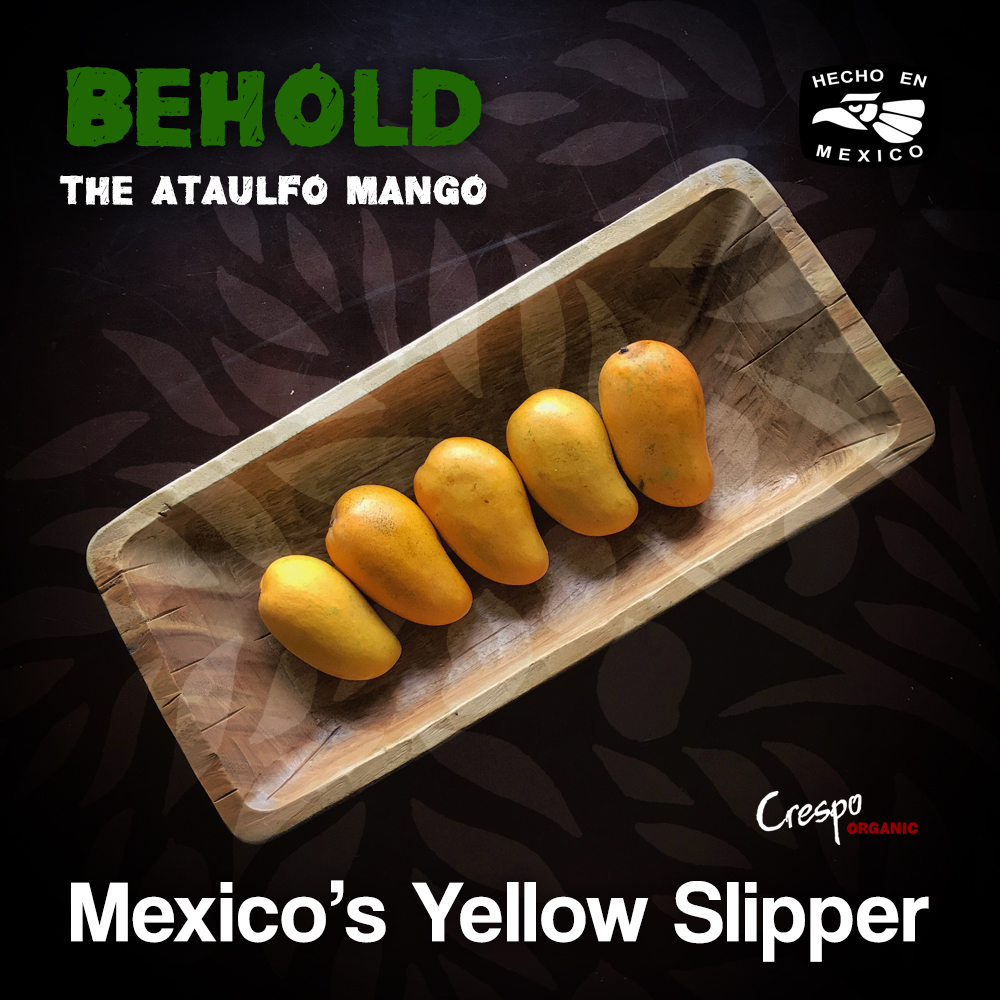
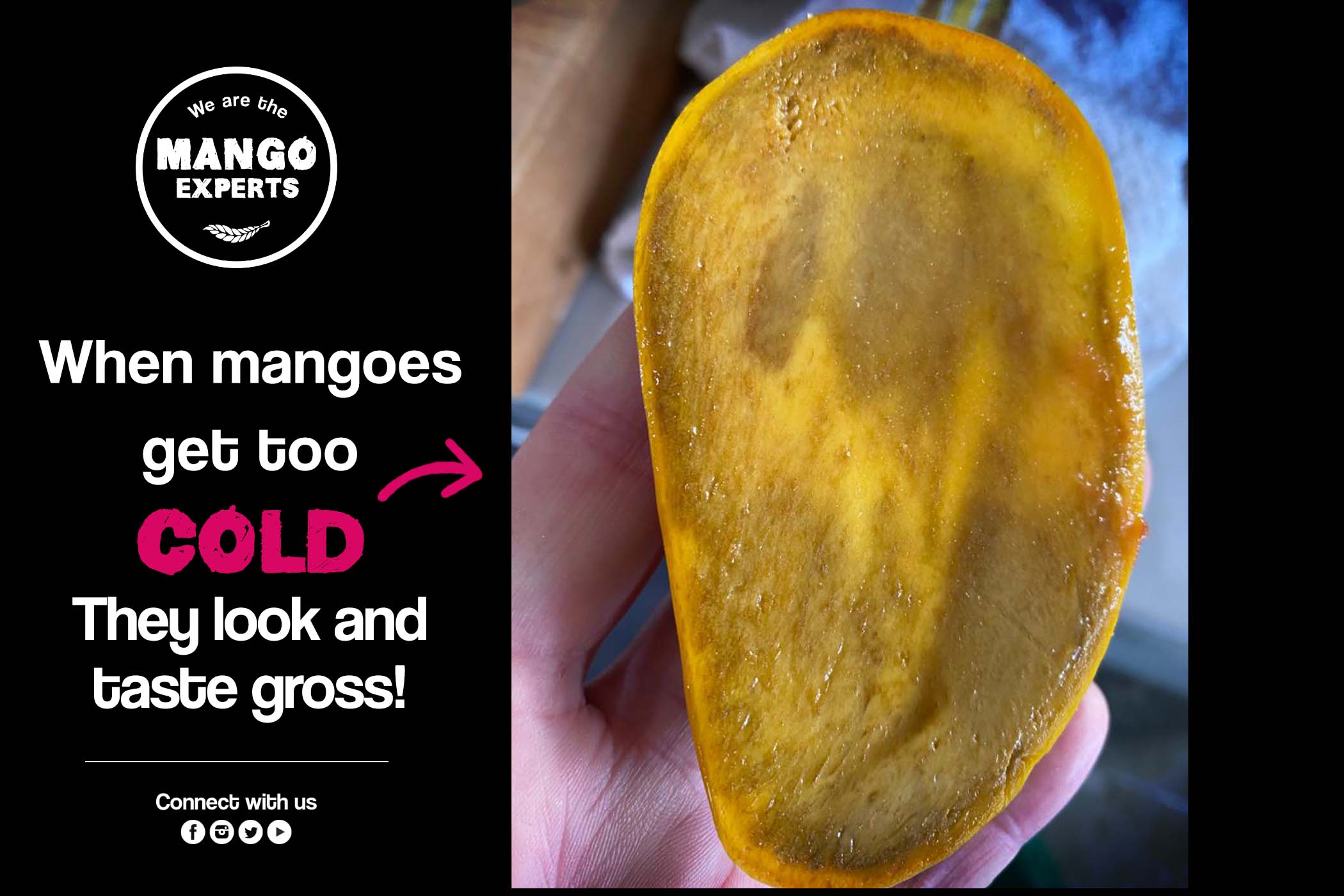

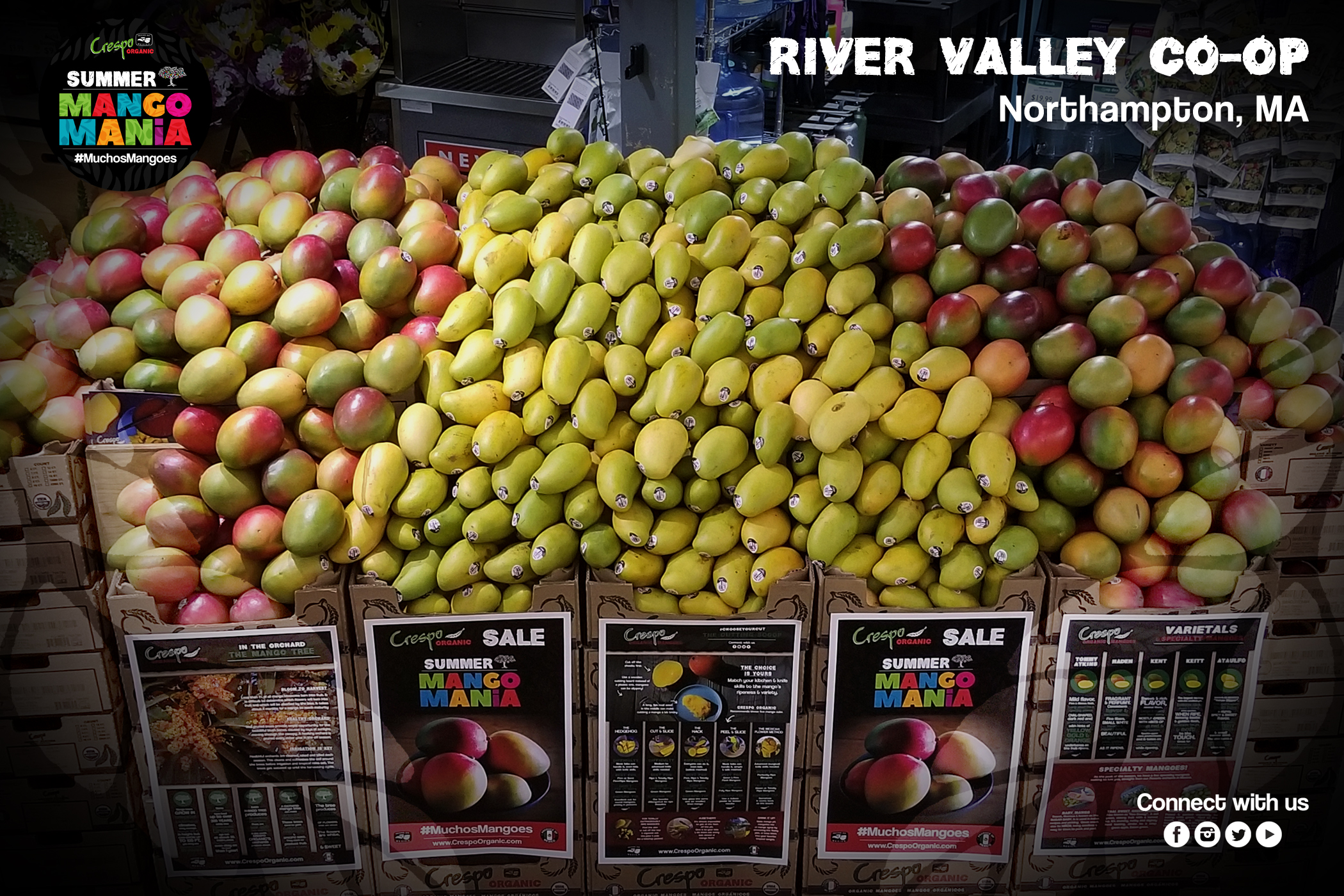
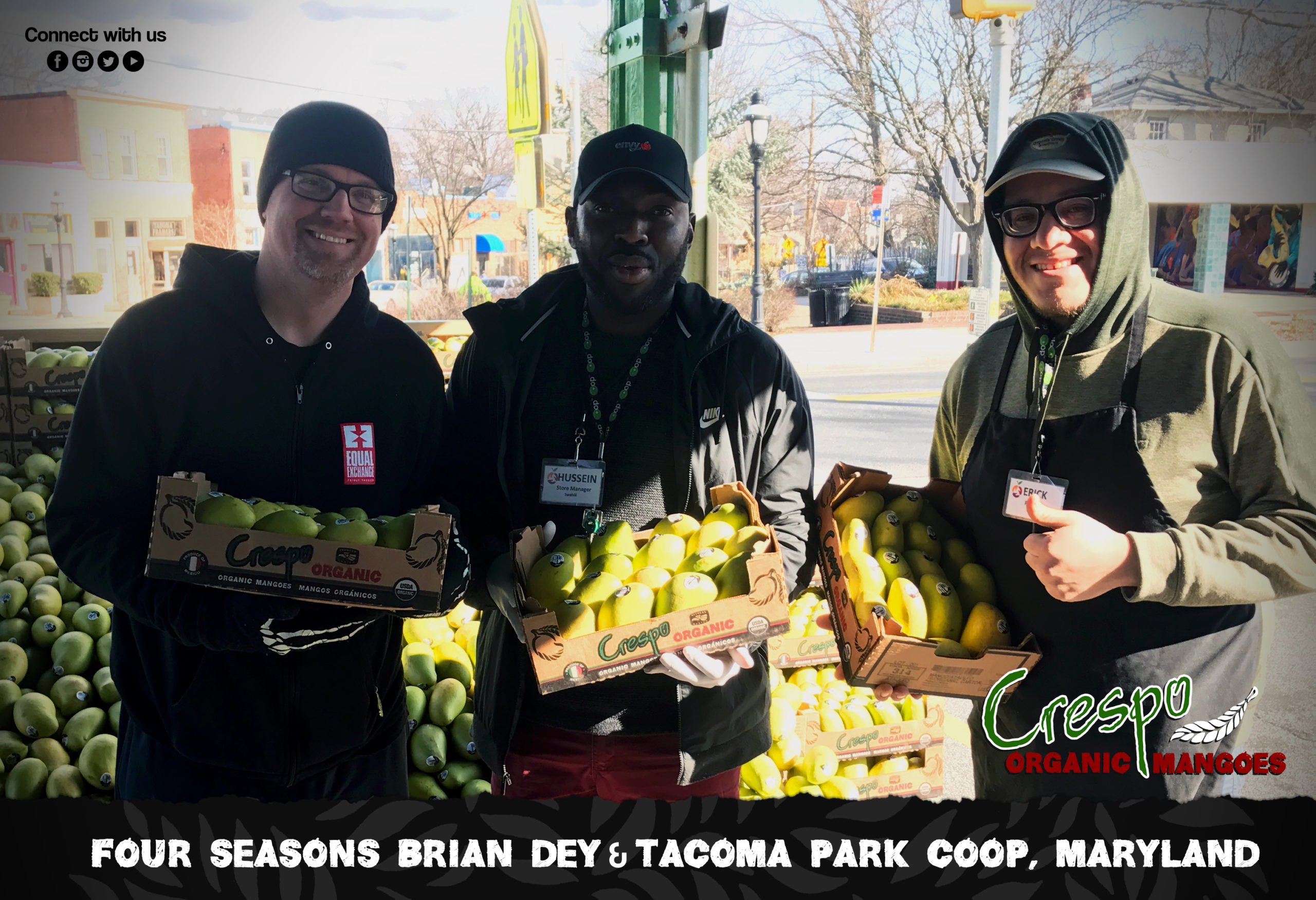
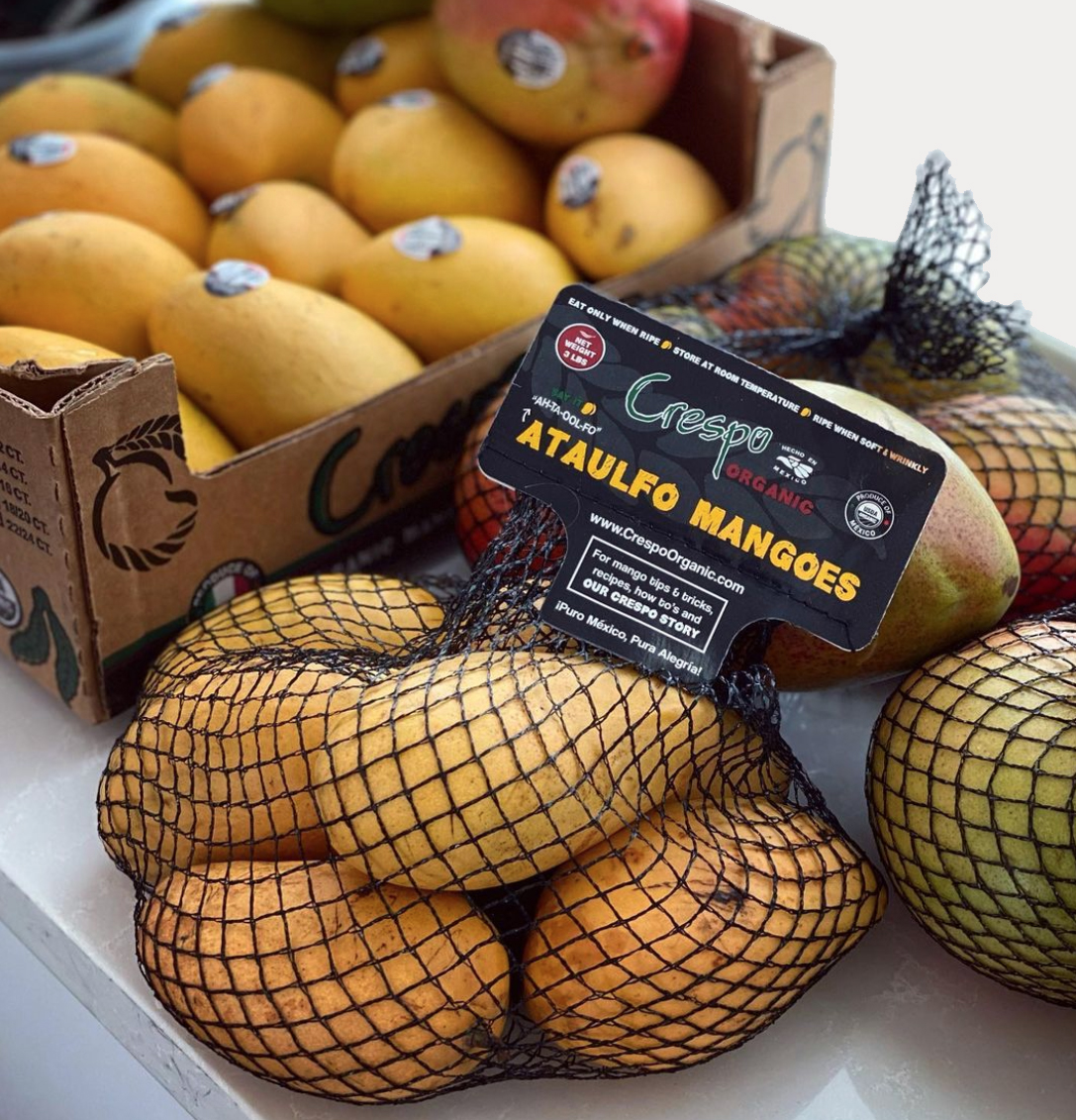
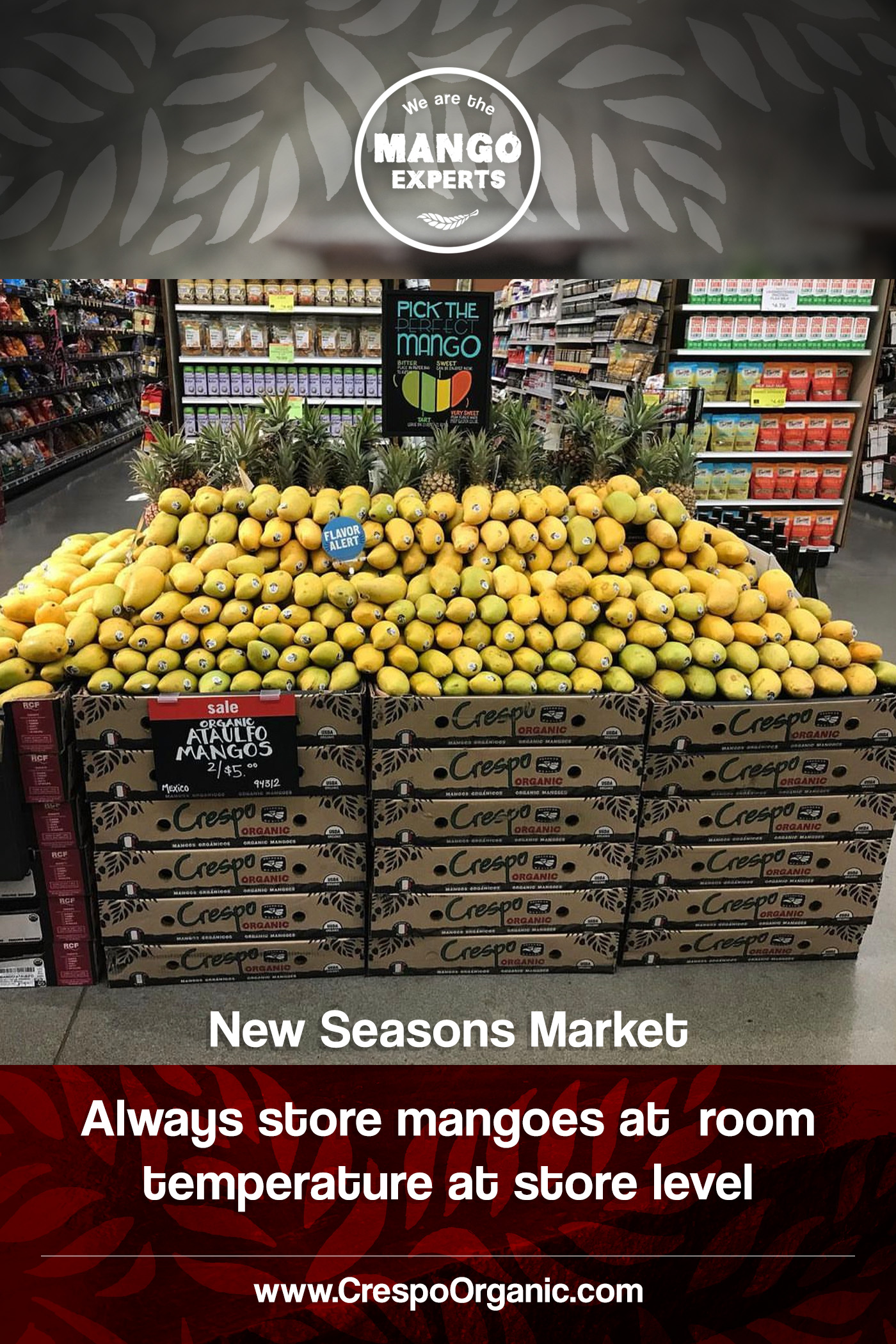

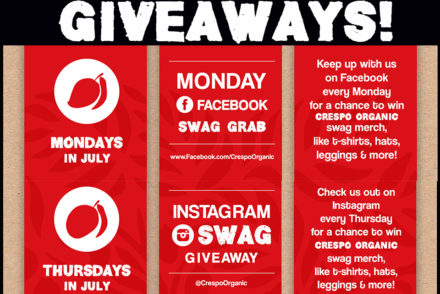




No Comments